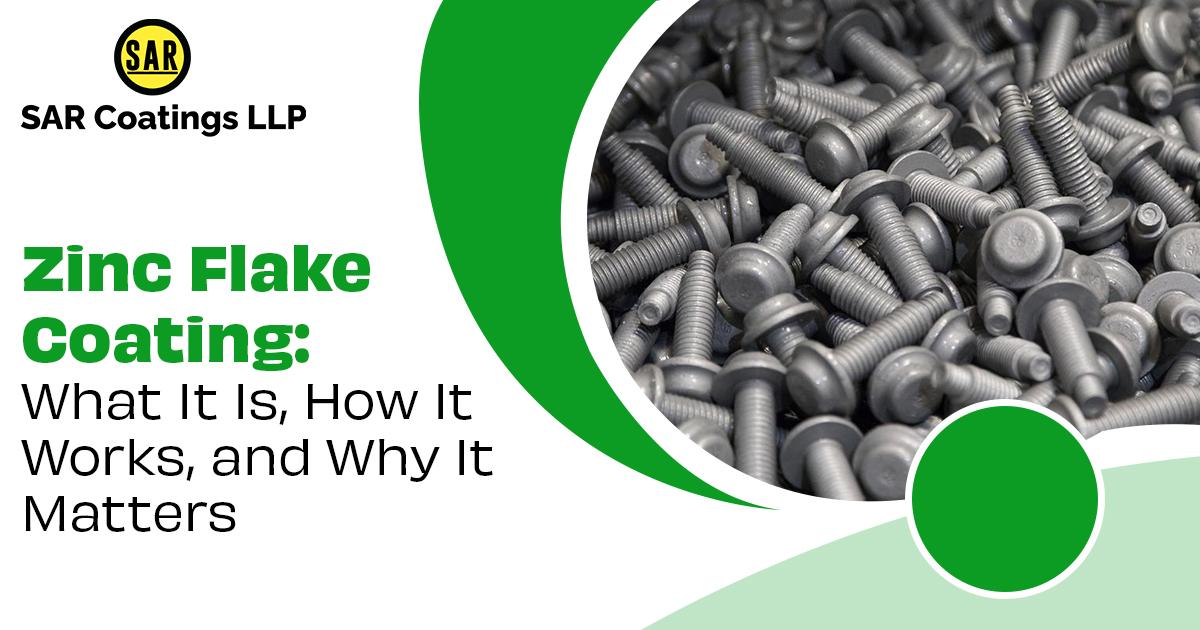Notifications

6 minutes, 46 seconds
-88 Views 0 Comments 0 Likes 0 Reviews

Still, automotive, or heavy-duty tackle, if you’re in manufacturing." But what exactly is it, and why does it get so much attention in erosion protection circles?
Let’s cut through the slang and get straight to the point.
At its core, zinc flake coating is a type of face treatment designed to cover essence corridors from rust and erosion. suppose it is like a high- performance guard that goes over bolts, nuts, boscage factors, or structural corridors exposed to tough surroundings.
What makes it different from your typical zinc plating or hot-dip coating is this
➡️ It doesn’t involve electricity or molten essence.
Rather, the coating is made up of bitsy zinc and aluminum flakes mixed into a binder, which is also applied( generally by scattering or dipping), and cured in a roaster.
The result? A thin but incredibly durable subcaste that protects essence from erosion, indeed under extreme conditions.
That's where it gets a bit specialized — but bear with me.
The zinc and aluminum flakes settle on the face of the essence, lapping each other like roof shingles. This lapping structure blocks humidity, swabs, and chemicals from getting through to the essence underneath.
Plus, zinc is a sacrificial essence; it corrodes before the sword does. So indeed, if the coating gets slightly damaged, the zinc still protects the base material by eroding in its place.
In simple terms
➡️ It blocks erosion.
➡️ If the coating is scratched, it still protects the essence.
➡️ It’s a palm-palm for long-term continuity.
When's the honest truth? It’s not always the cheapest option.
But if you’re working with a high-tensile sword or a corridor that will be exposed to harsh surroundings, zinc flake is worth every rupee( or bone).
Still, you’re risking hydrogen embrittlement — a silent killer that causes corridors to fail suddenly, if you’re using electroplating on high-tensile fasteners. Zinc flake coating eliminates that threat because it’s a non-electrolytic process.
Depending on the operation and coating system, zinc flake coatings can repel 800 to 1,000 hours of swab spray testing( ASTM B117). That’s well above what traditional zinc plating offers.
It doesn’t mess with vestments or precise confines. We are talking about 5 – 15 micrometers of consistency on average — thin enough to maintain forbearance, but tough enough to survive the long haul.
Ultramodern zinc flake systems are frequently chromium-free( no hexavalent chrome), which makes them compatible with global environmental norms like RoHS and REACH.
You’ll see zinc flake coating used in diligence where erosion isn’t just inconvenient, it’s dangerous or expensive.
Automotive Fasteners, Boscage discs, lattice corridor
Construction Structural sword factors, anchors
Wind & Solar tackle exposed to outdoor conditions
Railroads & Aviation High-performance corridor that can’t fail
Defense & Marine Salt spray and erosion are constant pitfalls
Anywhere you need continuity perfection, no erosion drama — zinc flake is a strong seeker.
That depends.
Still, regular zinc plating might do the job if you’re sheeting a commodity that stays outdoors and doesn’t face high humidity. But for corridors that live outside, go underground, or face swab spray( like littoral areas), zinc flake is the smart move.
There are a lot of fancy coatings out there. But zinc flake has earned its spot for a reason; it just works. It’s not flashy, and it doesn’t need to be. It still does its job guarding the corridor from rust and failure, time after time.
Still, give zinc flake sheeting a serious look, If you’re serious about long- term performance and want to avoid the pain of unseasonable erosion or mechanical failure.
It’s not the cheapest.
It’s not the trendiest.
But it might just be the stylish decision you make for your factors.
Need help figuring out if zinc flake coating is right for your corridor?
Sar Coatings works with manufacturers across automotive, construction, and energy diligence, helping them cover their essential factors a smart way. Get in touch if you’d like to talk about options.

